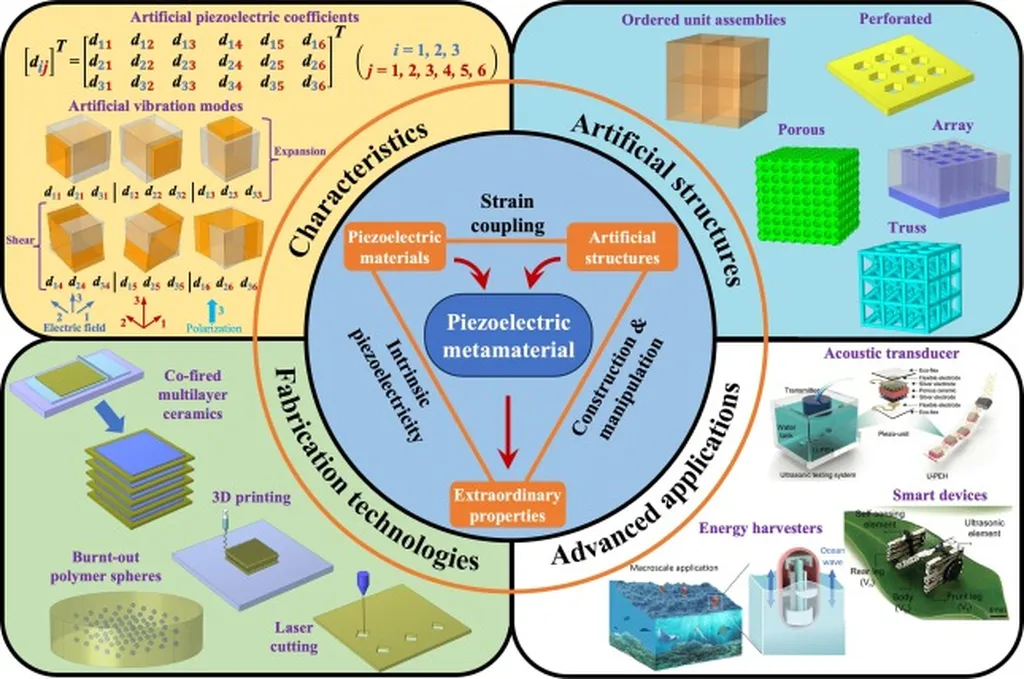In the ever-evolving landscape of smart materials and structures, a groundbreaking study led by Li Zhao from the School of Civil Engineering and Architecture at Zhejiang University of Science and Technology in Hangzhou, China, is set to redefine the boundaries of piezoelectric technology. Published in the esteemed journal *Materials & Design* (which translates to *Materials and Design* in English), Zhao’s research delves into the complex world of bidirectional functionally graded porous (BDFGP) plates, offering insights that could revolutionize the energy sector.
Zhao and his team have uncovered the intricate dynamics of PZT-4/PZT-5H plates under combined thermoelectric and electromechanical loading. Their work focuses on how bidirectional material gradation and porosity affect the nonlinear dynamic response of these piezoelectric structures. “The key here is understanding how these materials behave under real-world conditions,” Zhao explains. “By capturing the nuances of electromechanical coupling and geometric nonlinearity, we can pave the way for more robust and efficient smart structures.”
The study employs advanced finite element formulations and nine-noded Lagrange elements, each node possessing seven degrees of freedom, to accurately model these complex interactions. The team’s innovative approach allows for a detailed analysis of natural frequencies, displacement amplitudes, and stability margins, providing a comprehensive understanding of the material’s behavior under various conditions.
One of the most compelling aspects of this research is its potential impact on the energy sector. Piezoelectric materials, which generate electricity when subjected to mechanical stress, are already used in various applications, from energy harvesting in wearable devices to structural health monitoring in civil engineering. However, the introduction of bidirectional material gradation and controlled porosity could significantly enhance their performance.
“Imagine structures that can adapt to their environment, optimizing their energy output based on real-time conditions,” Zhao envisions. “This research brings us one step closer to that reality. By fine-tuning the material properties, we can create more efficient and reliable energy-harvesting systems, which is crucial for the future of renewable energy.”
The study’s findings demonstrate pronounced variations in dynamic responses under different boundary conditions and loading scenarios. This level of control and predictability is a game-changer for industries looking to integrate smart materials into their designs. “The ability to tailor the material’s response to specific needs opens up a world of possibilities,” Zhao adds. “From aerospace to automotive, and from civil infrastructure to consumer electronics, the applications are vast and varied.”
As the world grapples with the challenges of climate change and the need for sustainable energy solutions, research like Zhao’s offers a beacon of hope. By pushing the boundaries of what’s possible with smart materials, we can create a future where structures are not just static entities but dynamic, adaptive, and efficient systems that contribute to a greener, more sustainable world.
In the realm of materials science and engineering, Zhao’s work stands as a testament to the power of innovation and the potential of smart materials to transform industries. As we look to the future, the insights gleaned from this research will undoubtedly shape the development of next-generation piezoelectric structures, driving progress and paving the way for a more sustainable and technologically advanced society.

